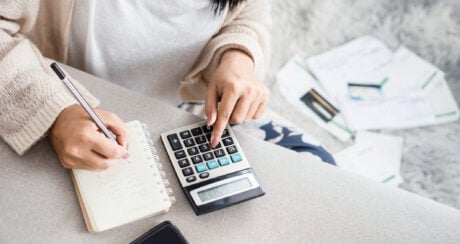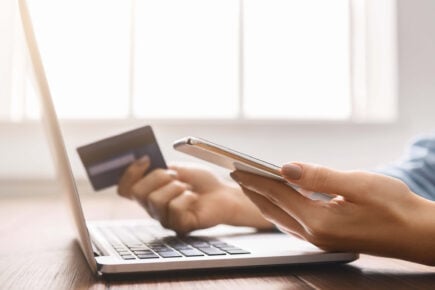If you look at the back of your credit card, you may see a signature panel. Signatures used to be how payments were authorised, but in 2014, this method was phased out for the personal identification number, commonly called a PIN. All credit and debit cards now use the PIN at the point of sale.
What is a card credit PIN?
A personal identification number (PIN) is a four-digit security access code for a specific card or debit card used to authenticate most in-person transactions. When you activate the card, you set this PIN yourself and can easily change it later.
Your PIN is for your eyes only, and keeping the code private ensures they are safe, fast and convenient to use. Since only you should know your PIN, these codes are considered safer than signatures, which can be faked and easily misconstrued. According to St.George Bank, there’s only a one in 10,000 chance of somebody guessing your PIN.
When is a PIN used?
You’ll use a PIN when authenticating most in-person transactions, just as you would have with a signature.
However, you won’t need to use your PIN to approve a transaction in some instances, such as for:
- Purchases made online or over the phone (you’d use your card’s security code instead).
- Small-value purchases under $35.
- Contactless payments for transactions below $100.
If you frequently make contactless, no-PIN payments, you won’t be notified of small amounts charged to your card, so regularly reviewing your credit card statement is essential. Anyone can take your card and ‘tap it’ at checkout without your approval, so implementing an extra security step in your financial routines is worthwhile.
» MORE: What is This Random Charge On My Credit Card?
How to find or change your PIN
If you forget your PIN, you can find or update your PIN through online banking in the app or browser. Follow the prompts from your respective bank.
For example, if you’re a CommBank customer:
- Log into the app
- Navigate to ‘Cards’
- Select the appropriate card
- Tap the yellow circle above ‘Choose Card PIN’
- Enter and confirm your new PIN
- Press ‘Confirm’
- Input your CommBank app PIN
- Tap ‘Done’.
» MORE: 9 Things to Know Before Getting Your First Credit Card
Tips for setting a secure PIN
Follow these strategies to keep your credit card safe. While credit card protection measures are in place, consumers must maintain smart security habits.
Don’t use personal details
Avoid using a PIN that coincides with your personal details. It’s tempting to pick a PIN representing your birthday, street address or any other unique sequence that might be easier to guess. Be aware of the information that fraudsters can easily find publicly.
Don’t recycle codes
You could use the same numerical code for the PIN on all of your credit and debit cards. While this may make it easier to remember your PIN, the repetition also increases the security risk.
Don’t repeat digits
Avoid duplicating digits in your PIN. Try not to use the same number twice, especially in a sequence — it makes it easier to guess.
Do be discreet in-store
Cover your hand when entering your PIN in public. This tip is especially important if you’re overseas and using a foreign ATM. If you don’t need to bring your credit card, leave it safely at home. It’s convenient to have all your cards in one place, but if you lose your wallet, you won’t have access to any of your cards.
Do change it regularly
To keep your credit card safe, set a reminder to update your PIN every three months. Then, keep a note of the new number in a safe place (separate from your wallet) and make sure your contact details are up to date in your online banking, just in case you need to receive a verification code.
Frequently asked questions
A security code, sometimes called a CSC, CVC or CVV, is distinct from your PIN. A security code is a three- or four-digit number the issuer generates and prints on a debit or credit card. You choose your PIN, and it does not appear on your card. You’ll use your card’s security code when making purchases remotely, such as online or over the phone.
A credit card PIN is four digits. However, you can sometimes choose to include more numbers.
For example, you can pick more than four digits as a Westpac customer, but they warn that some industries and countries only accept four-digit PINs. If you want a longer PIN to protect yourself, it might be worth changing it frequently rather than choosing a longer PIN that might limit you.
DIVE EVEN DEEPER

What To Know About Credit Card Surcharges
A credit card surcharge is used to cover the cost of processing a credit card payment, and the cost typically ranges from 0.5% – 2%.

How Do Credit Card Interest Rates Work?
Everything you need to know about credit cards to use them responsibly.

Types Of Credit Cards In Australia
Types of credit cards include rewards, low-interest, balance transfer and credit-building cards. When choosing a credit card, consider your spending habits and ability to repay the balance.

Personal Loan Vs. Credit Card: What’s The Difference?
Personal loans give you a lump sum for large purchases. Credit cards work better for smaller, everyday expenses.

